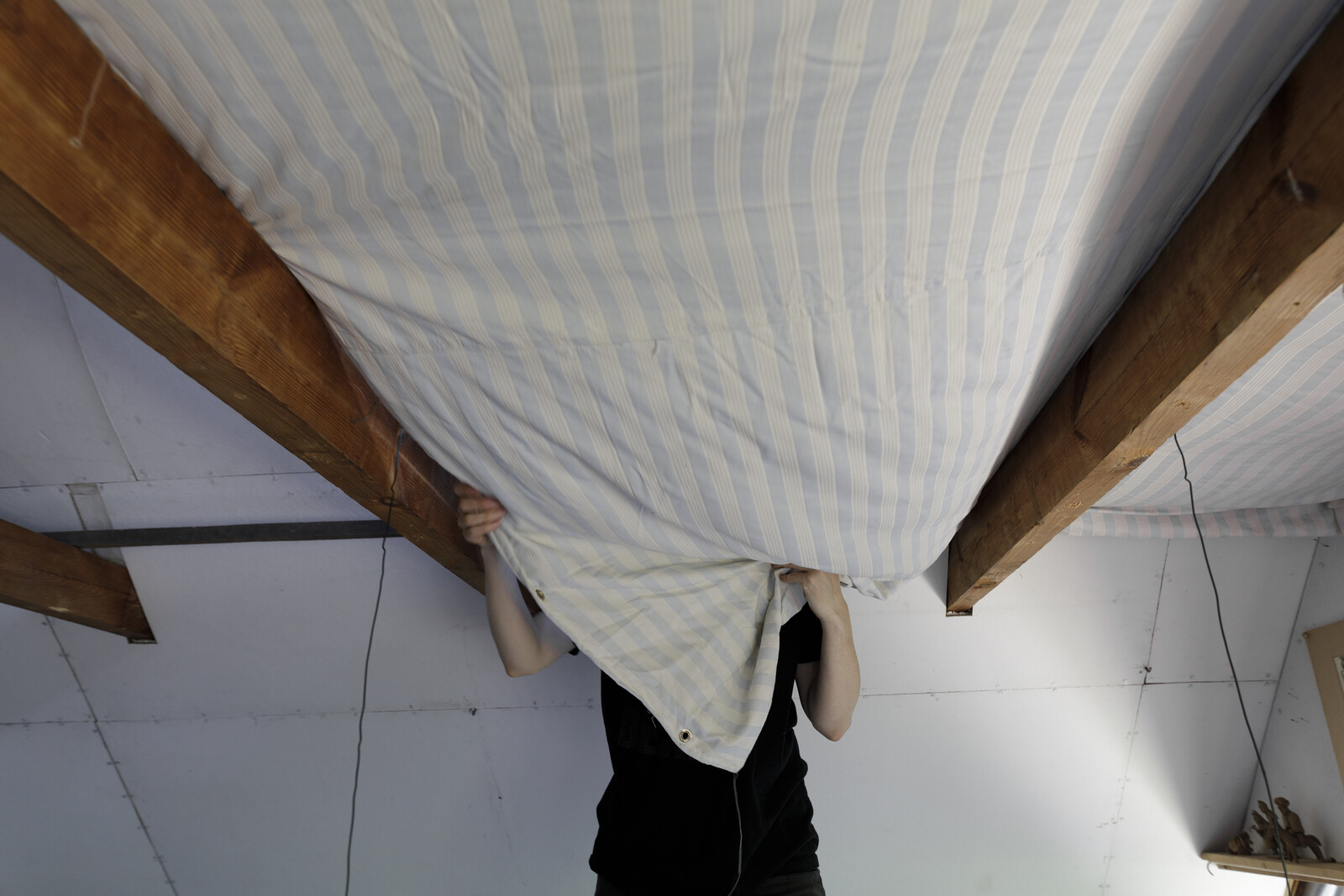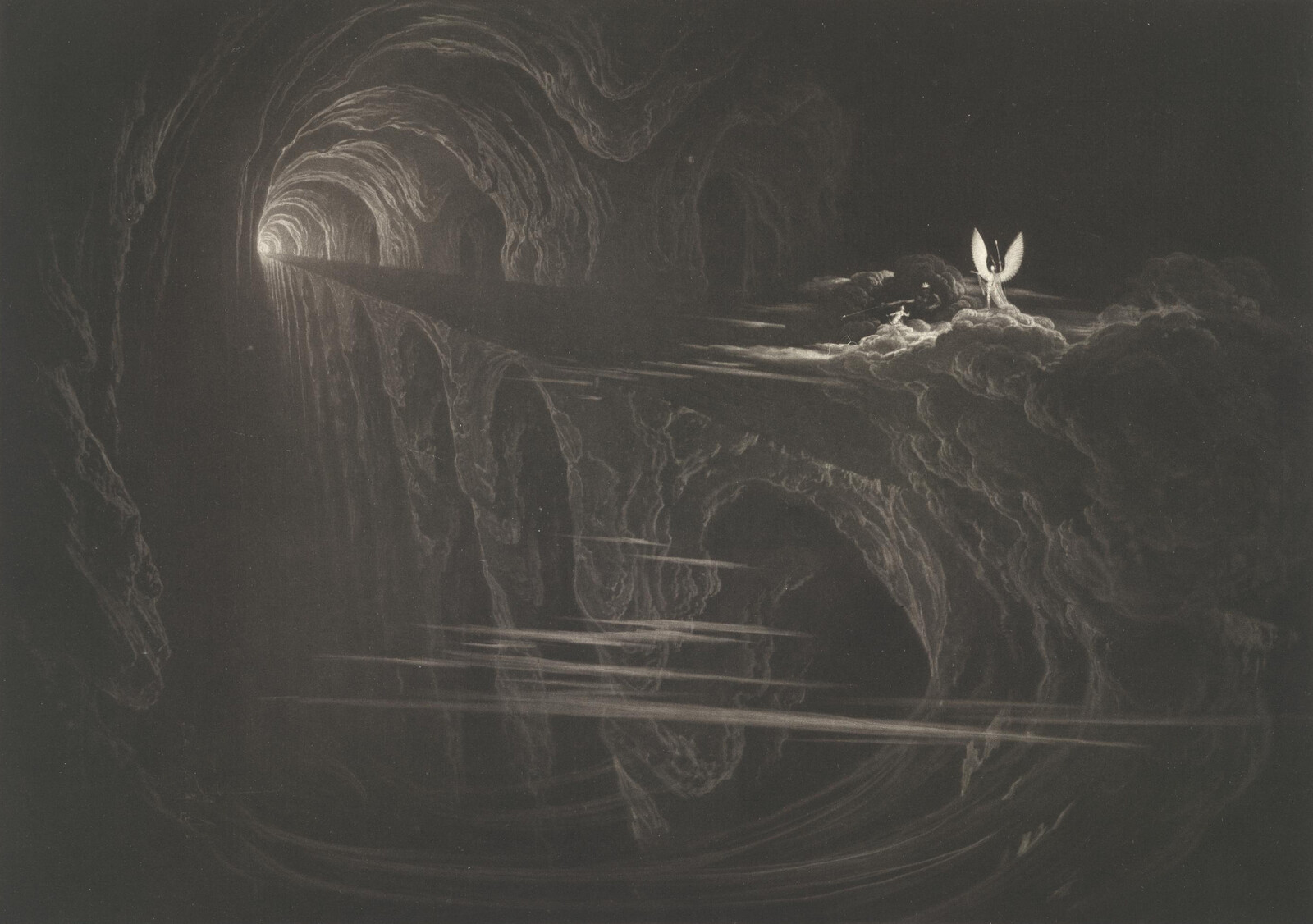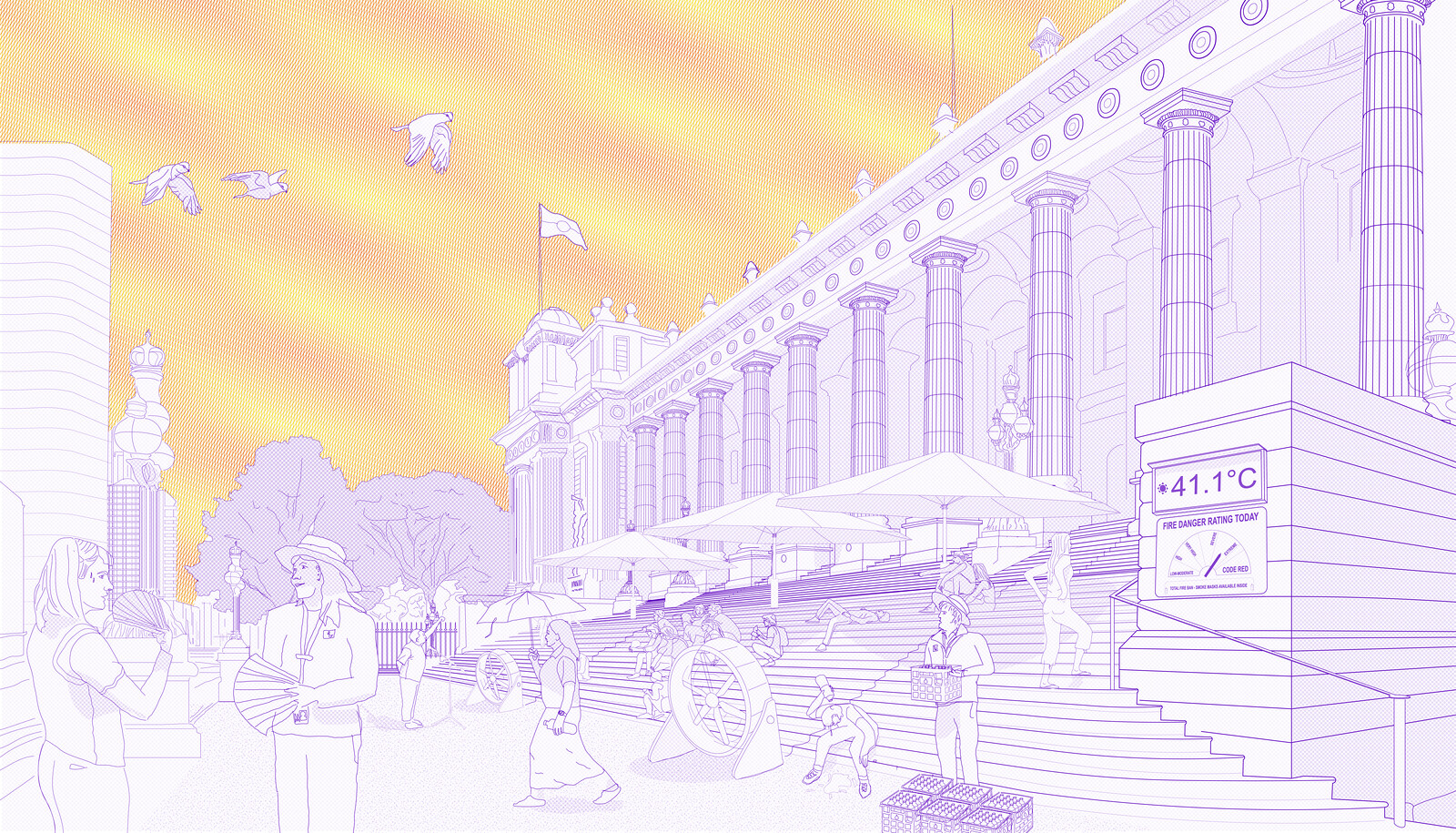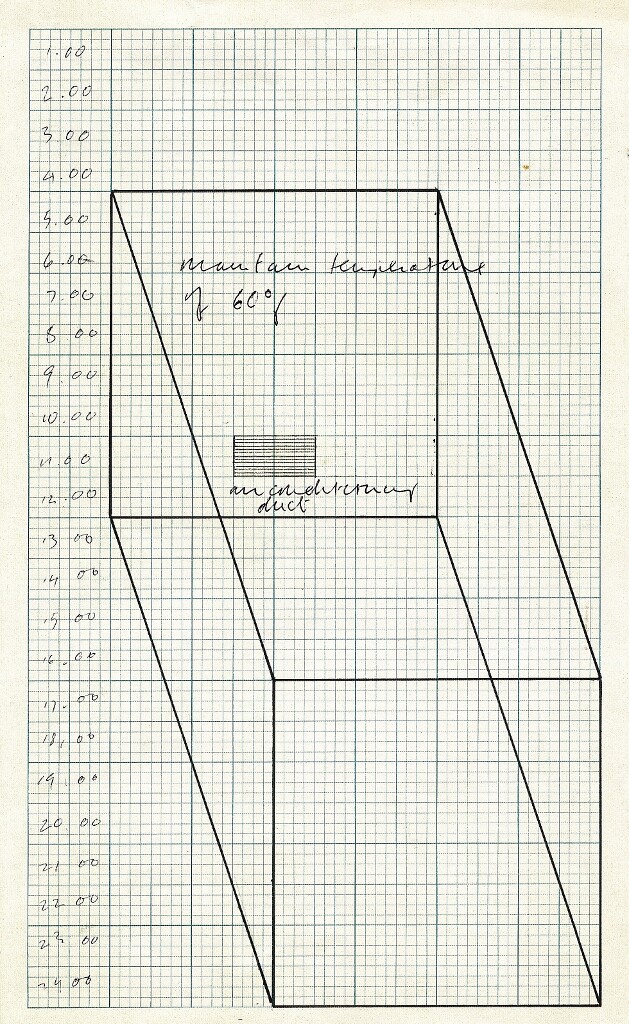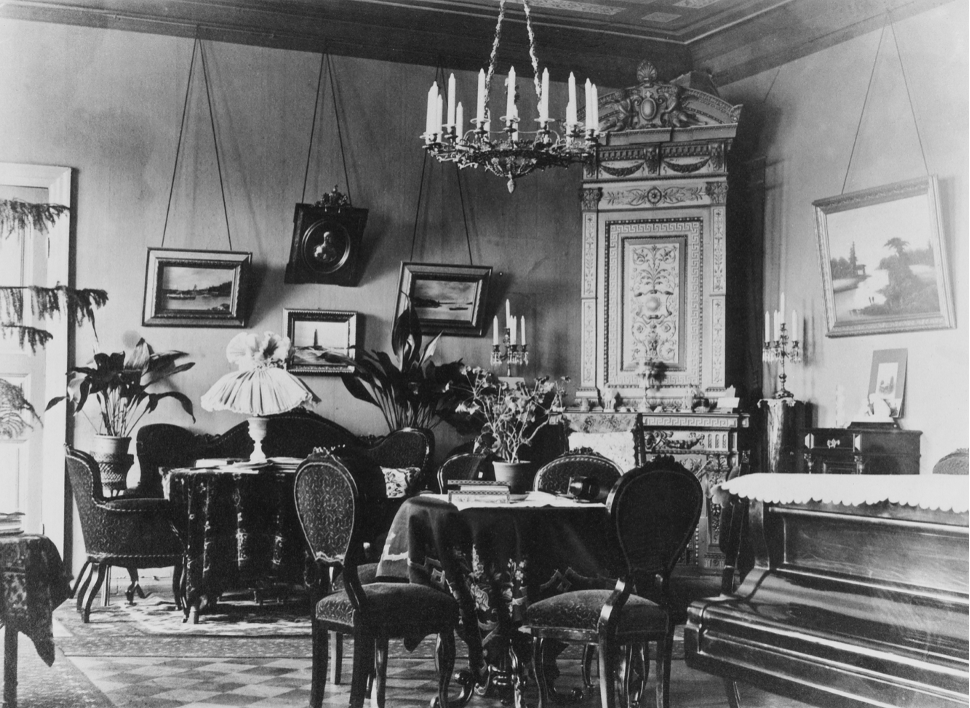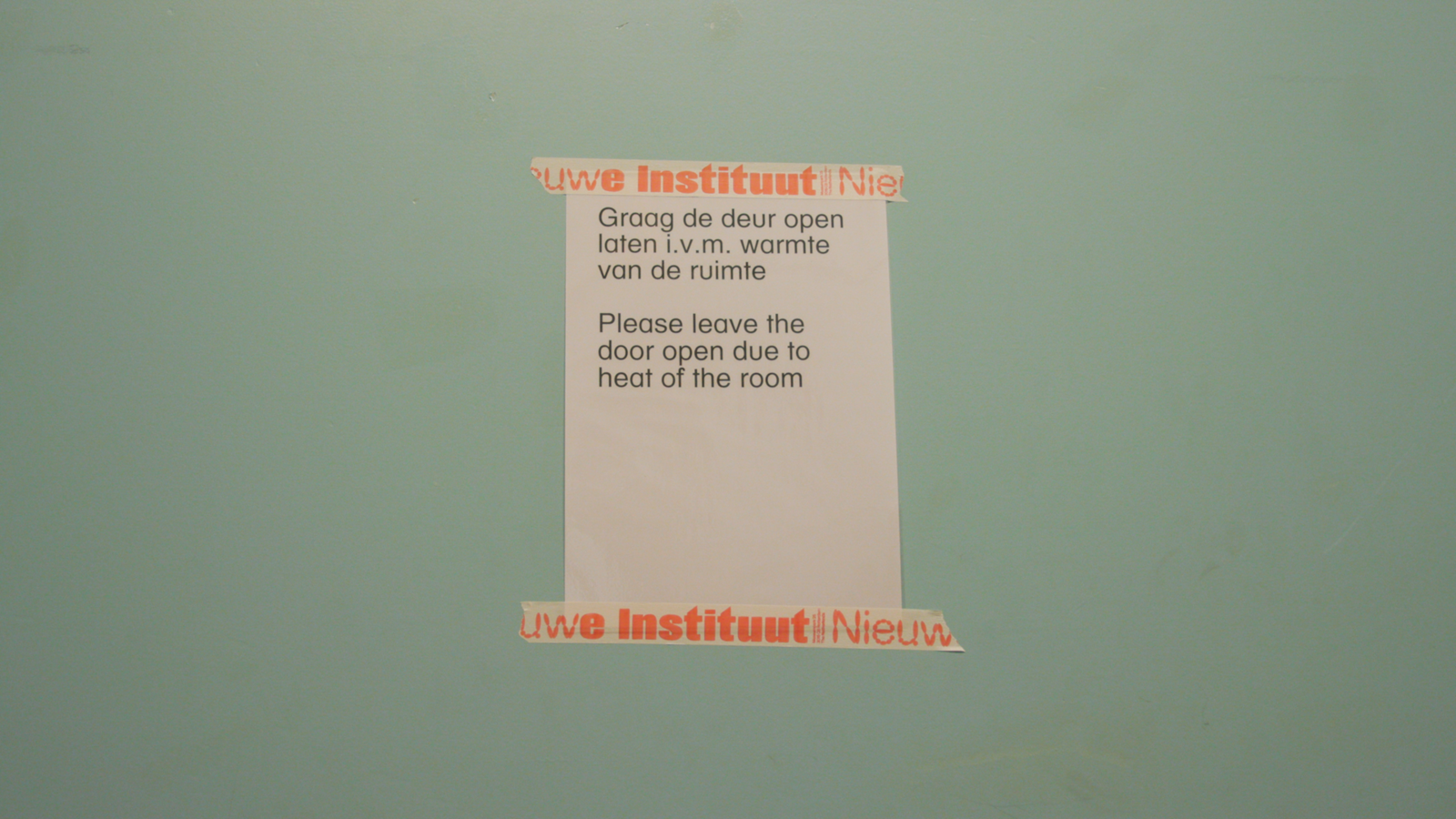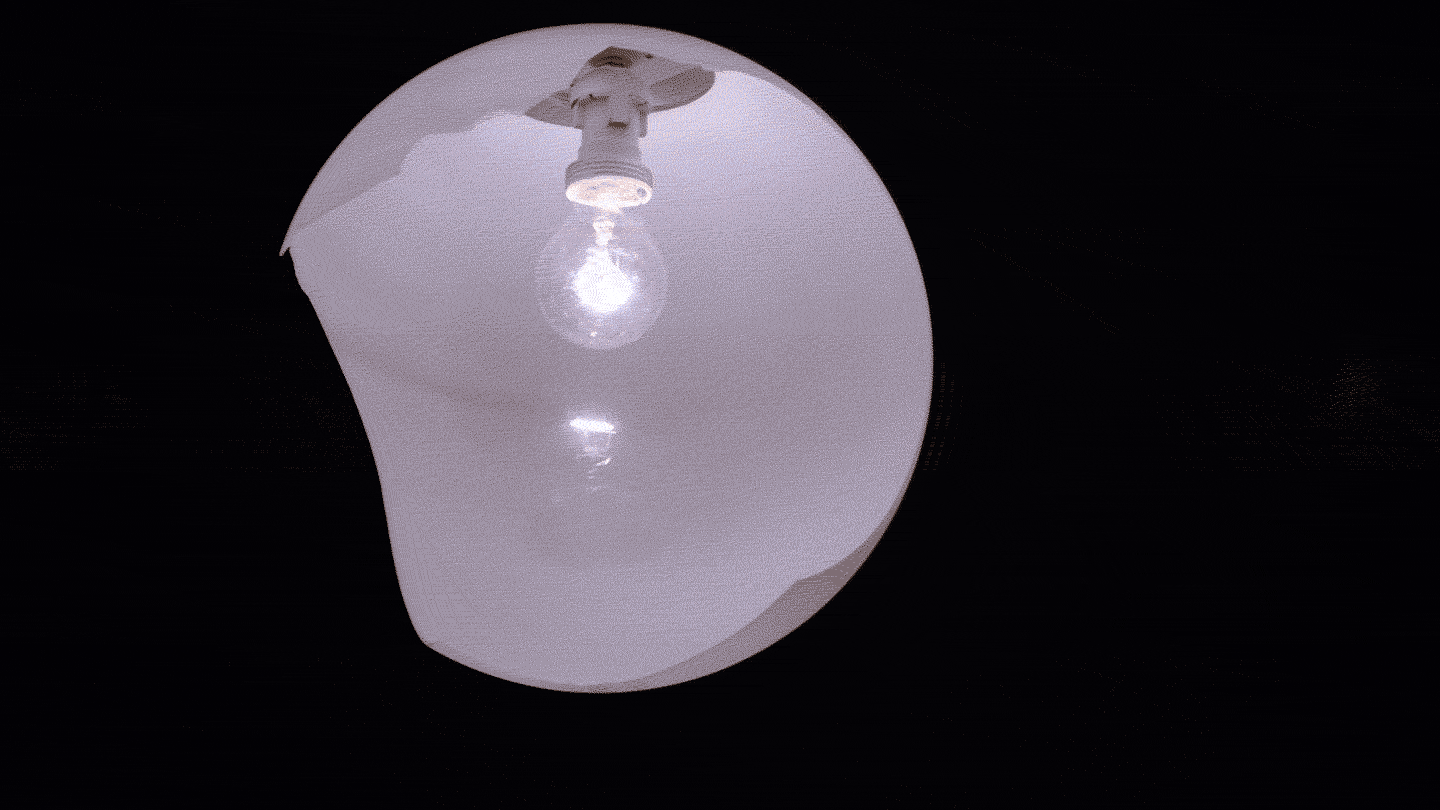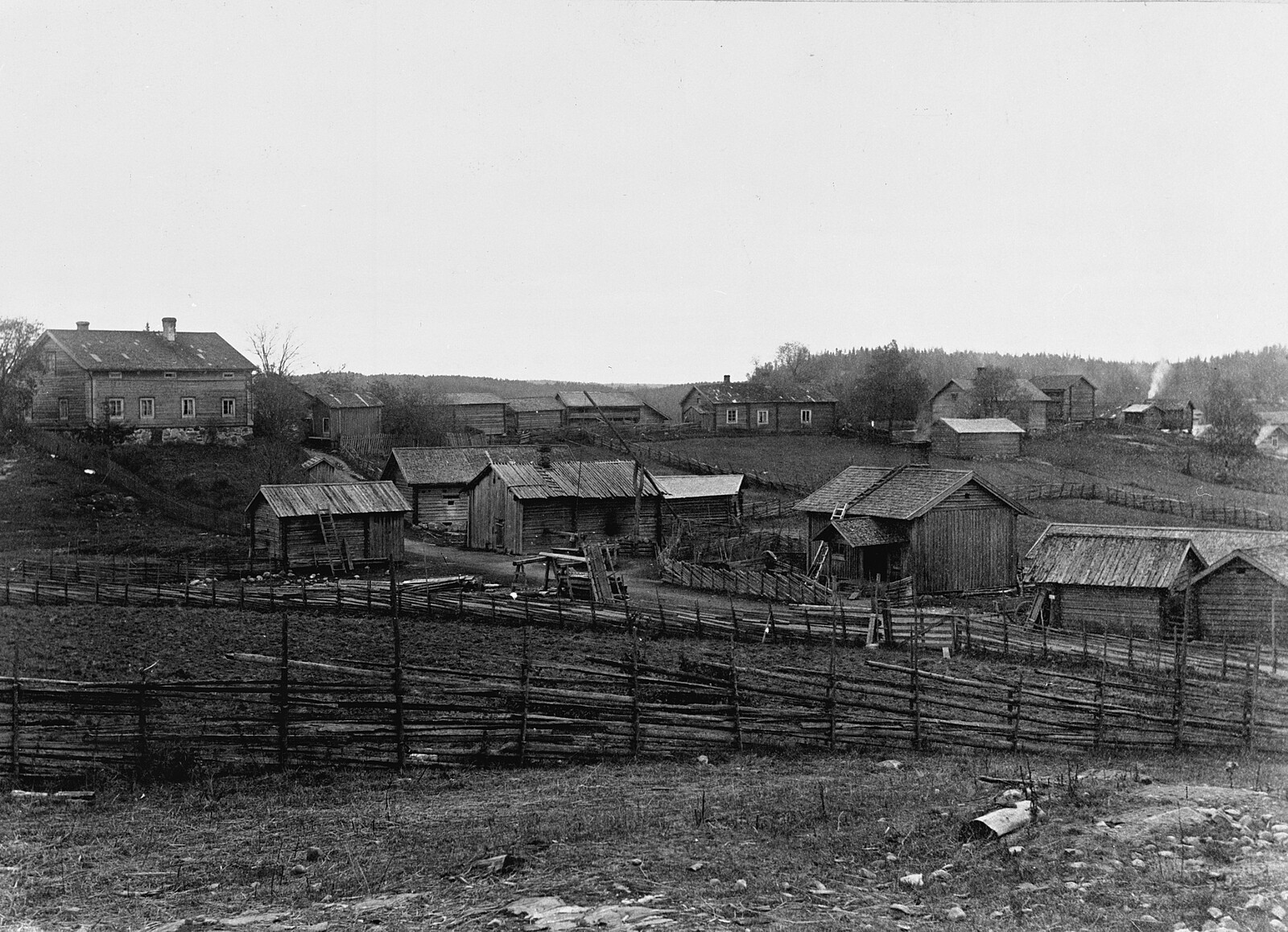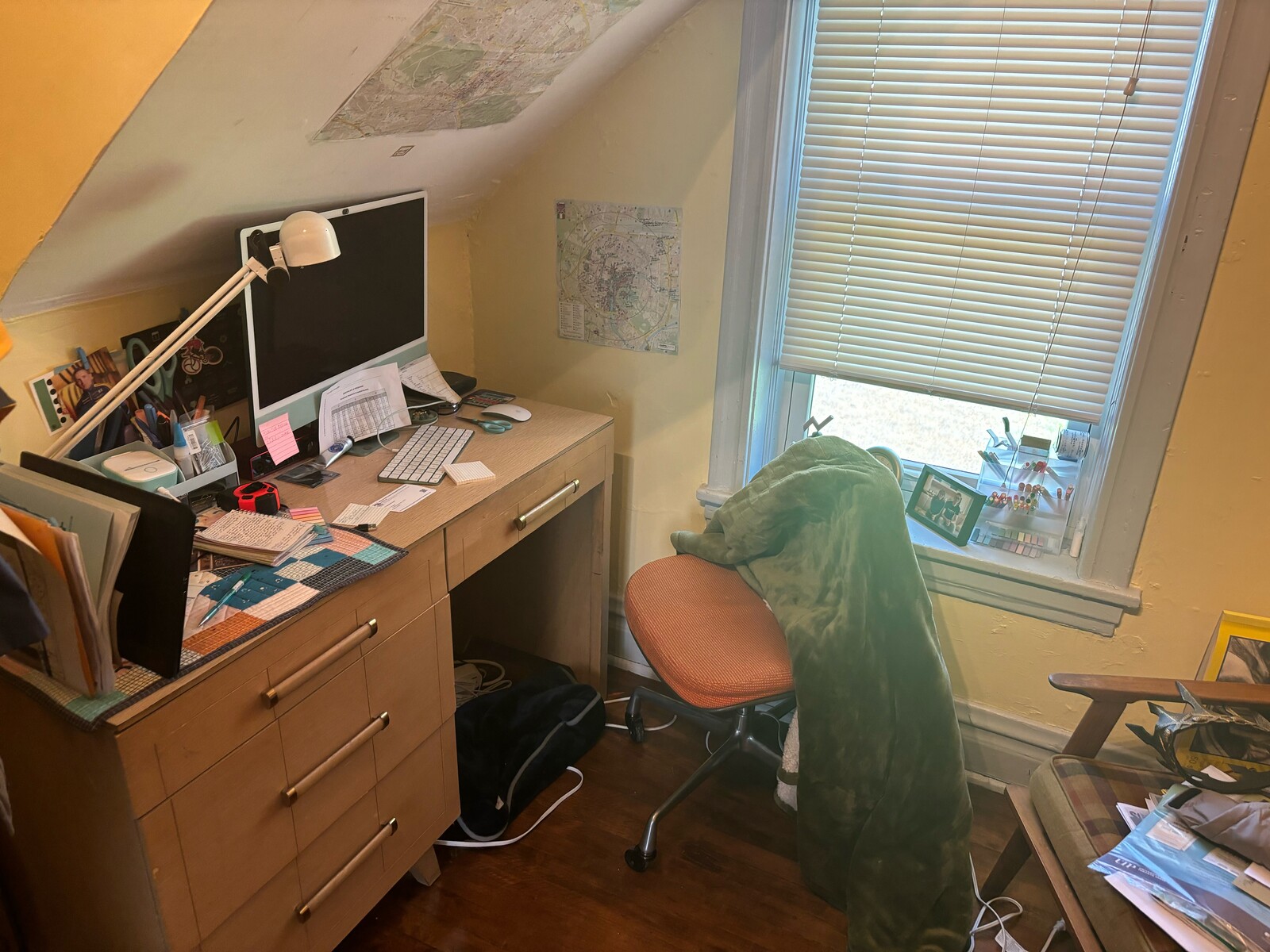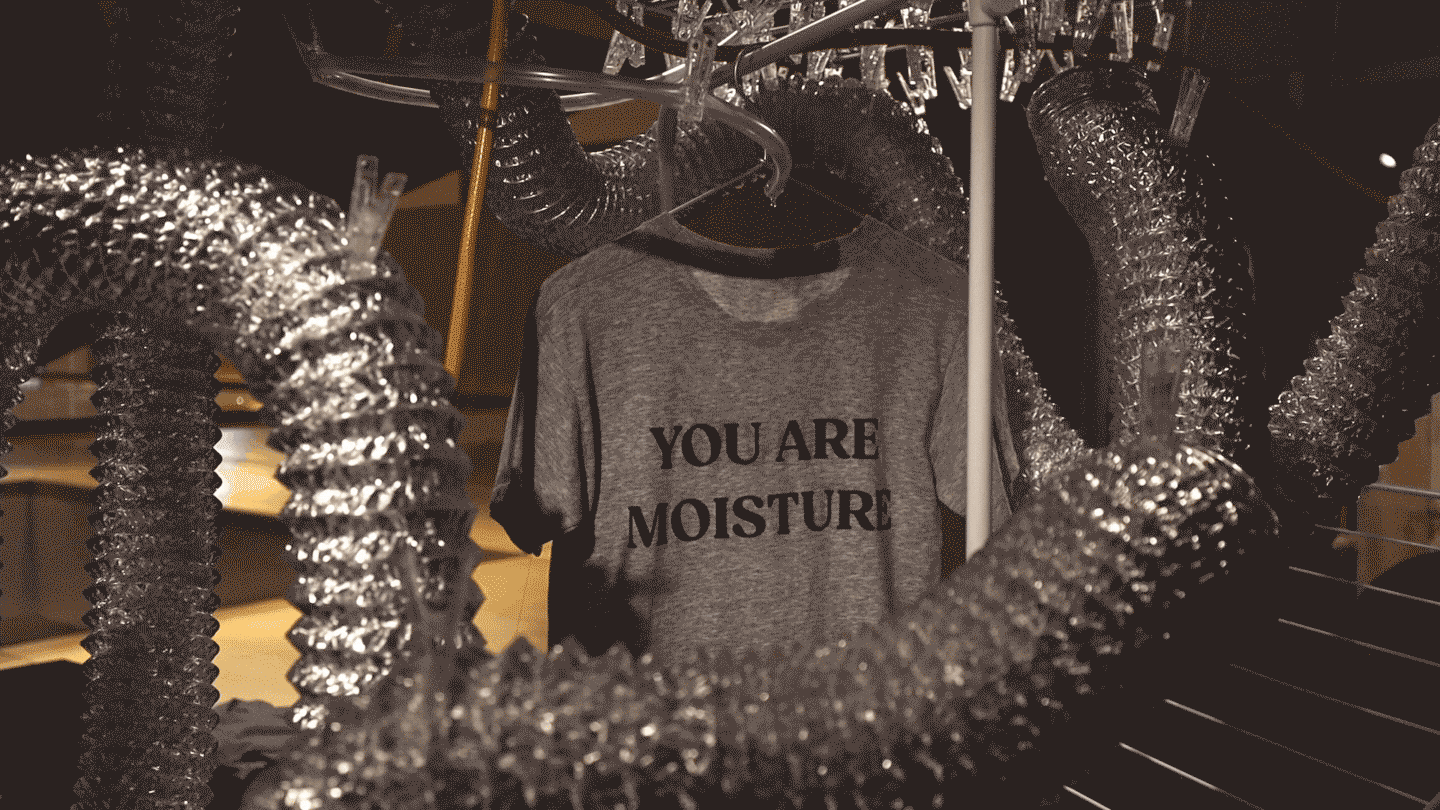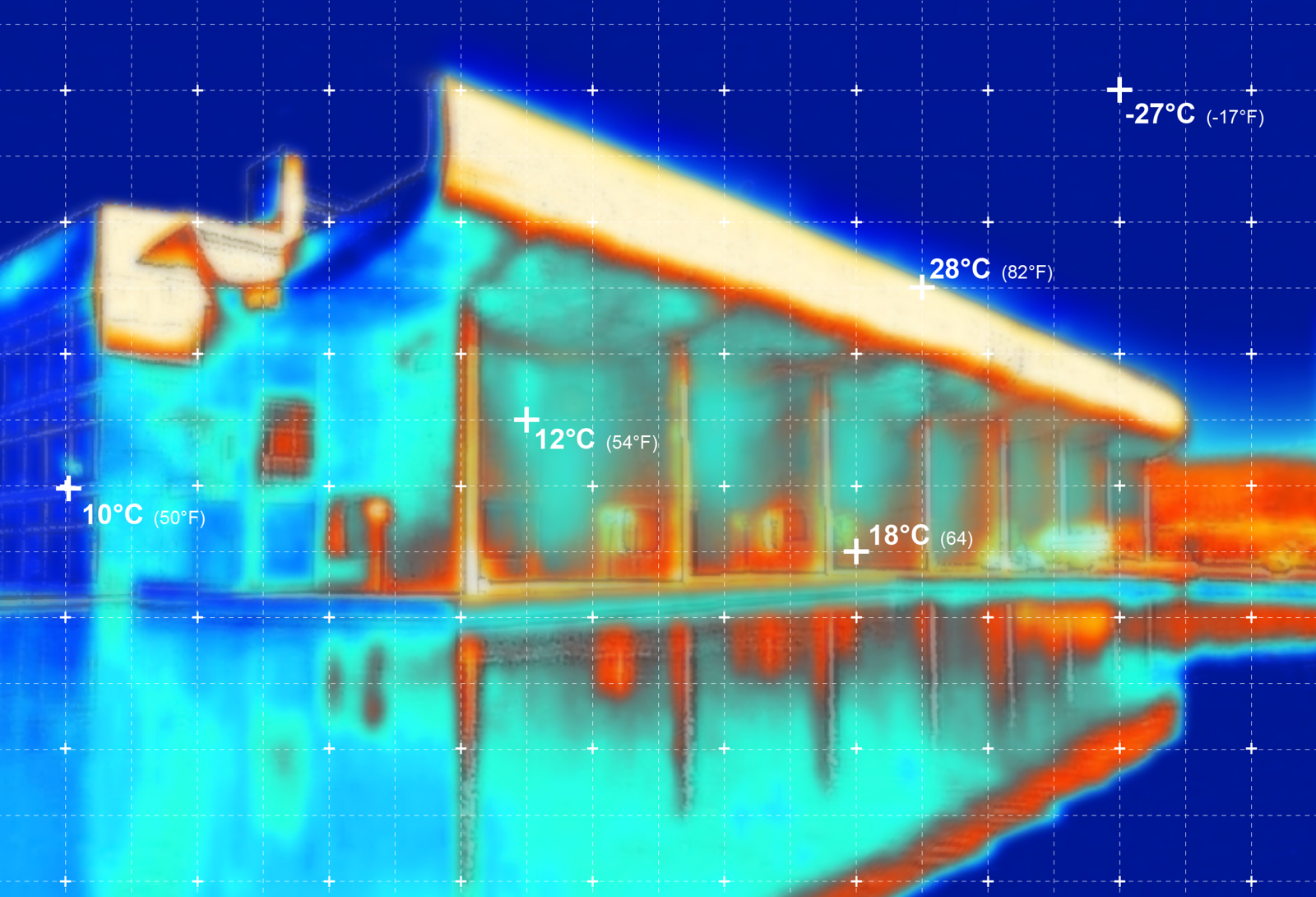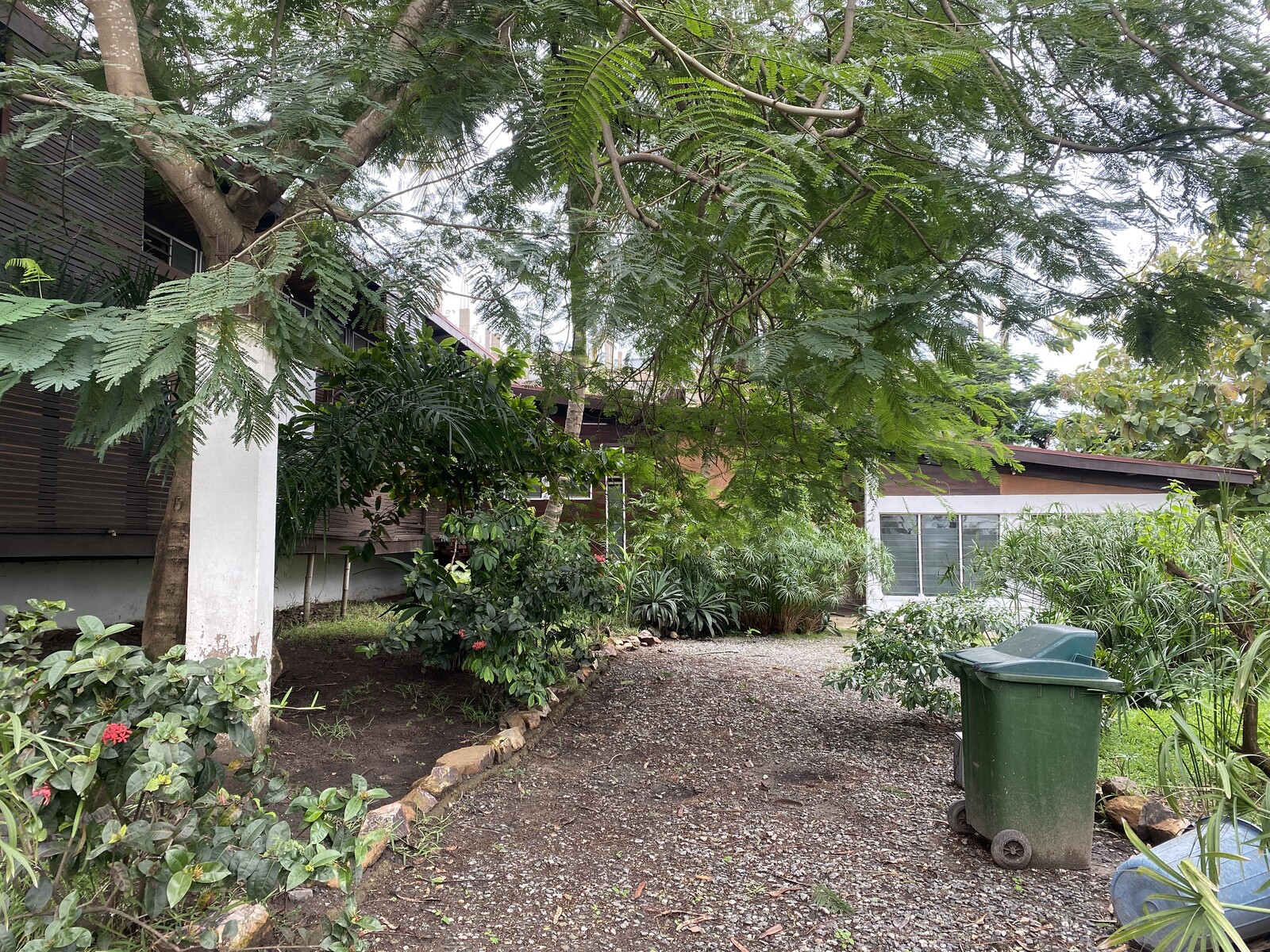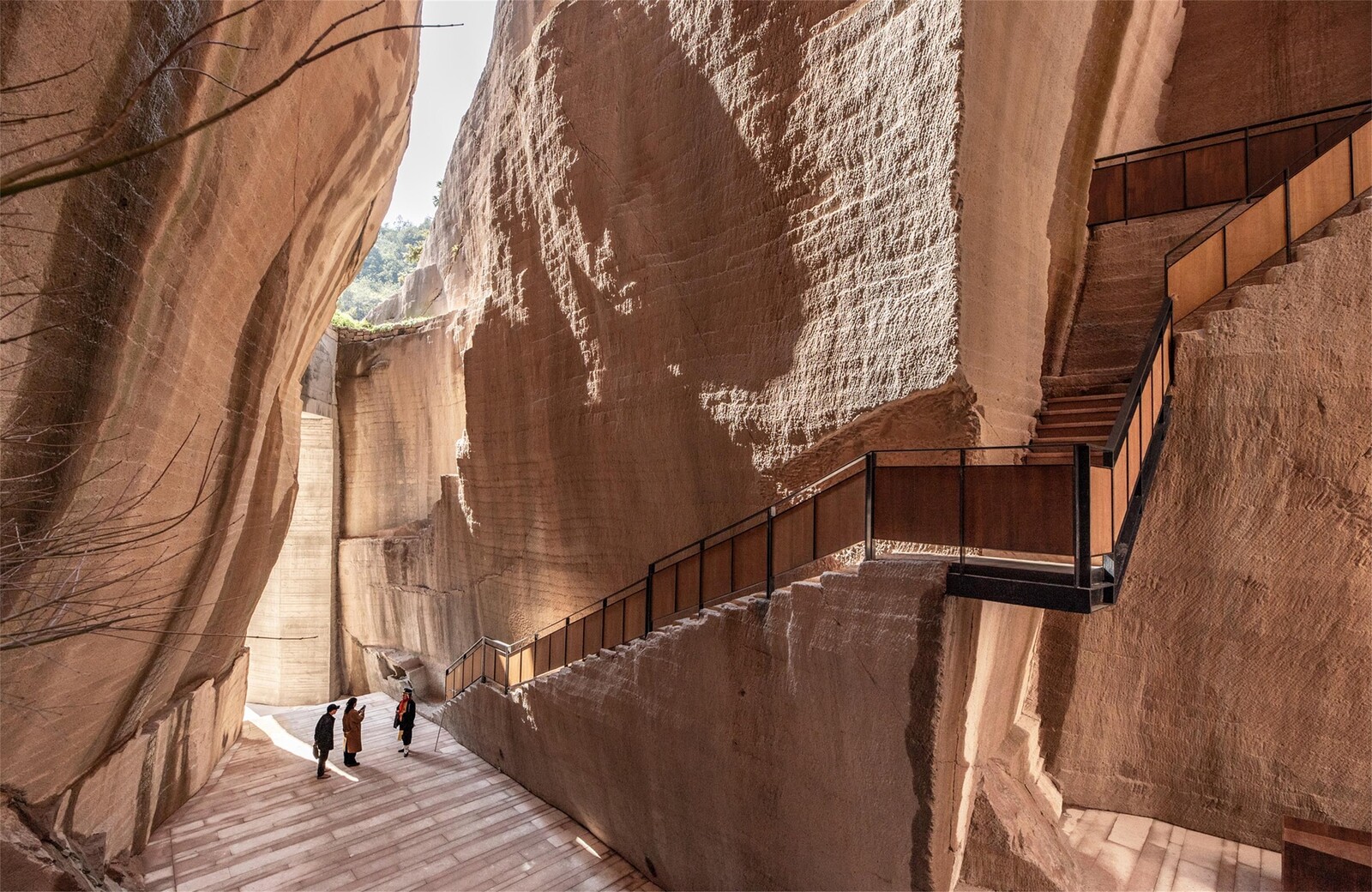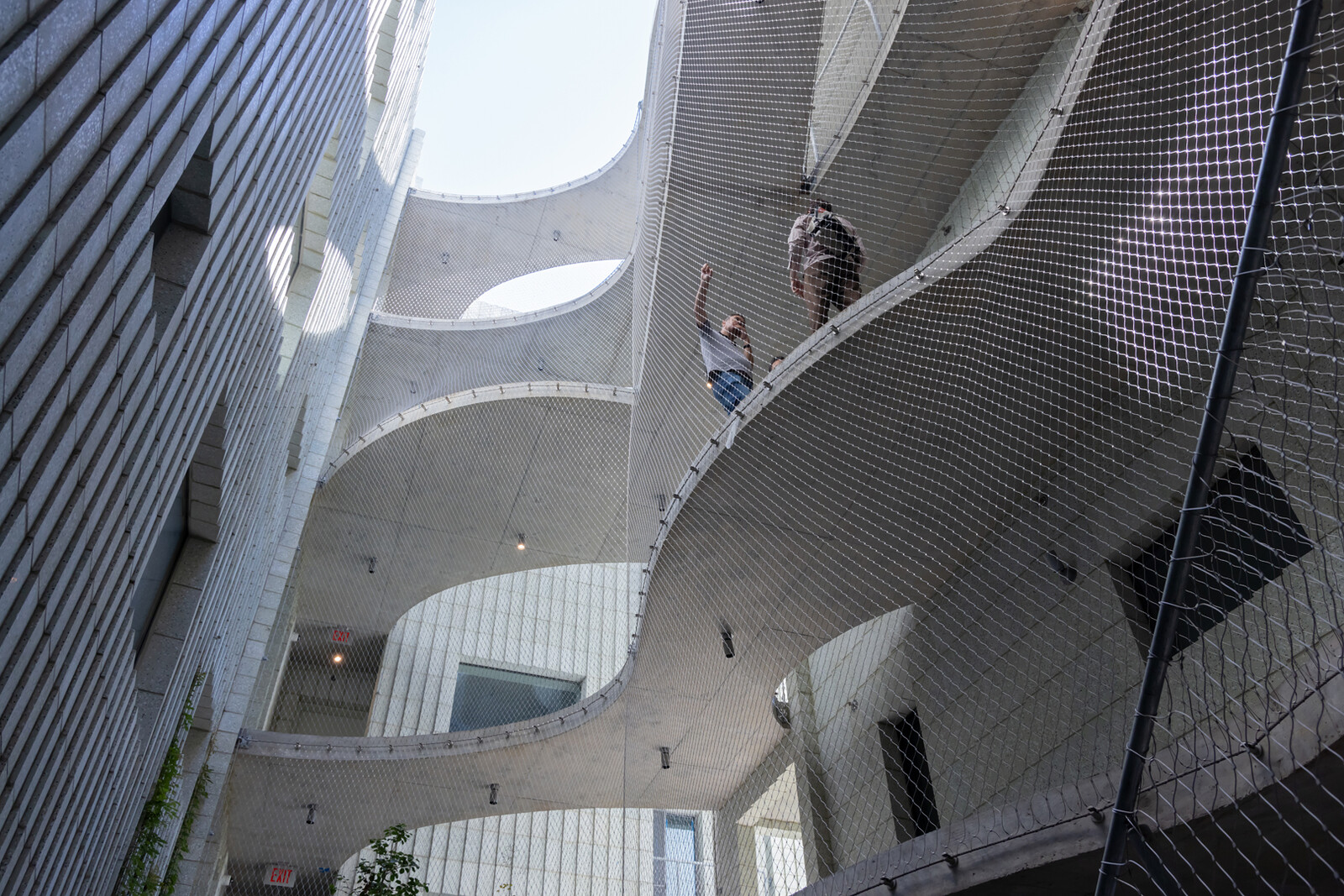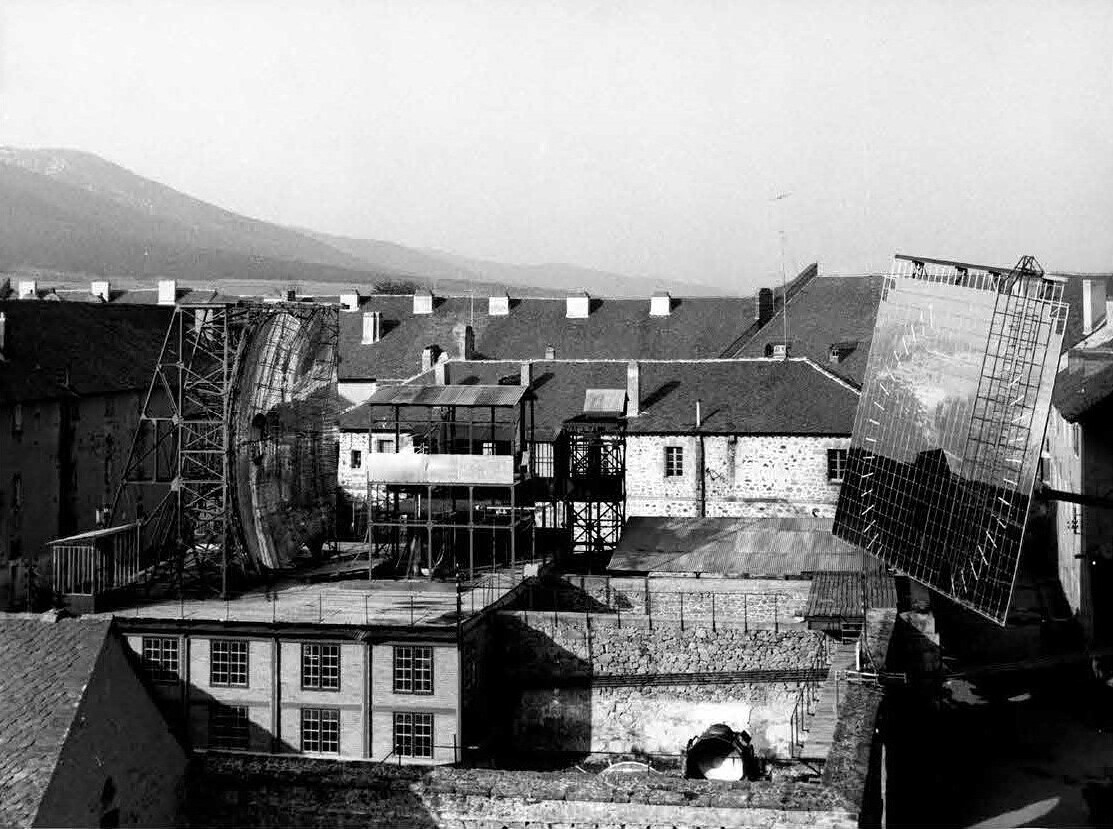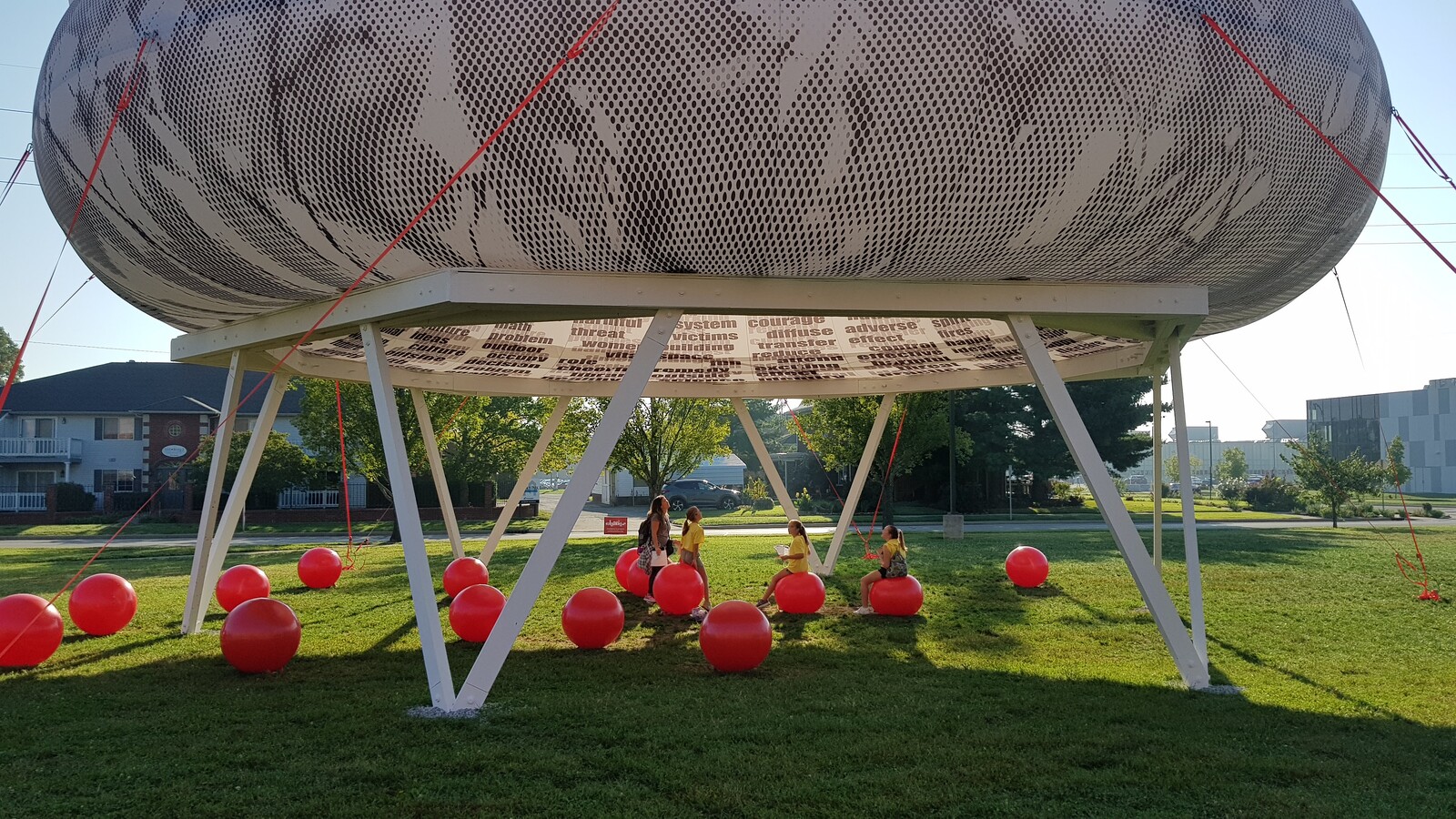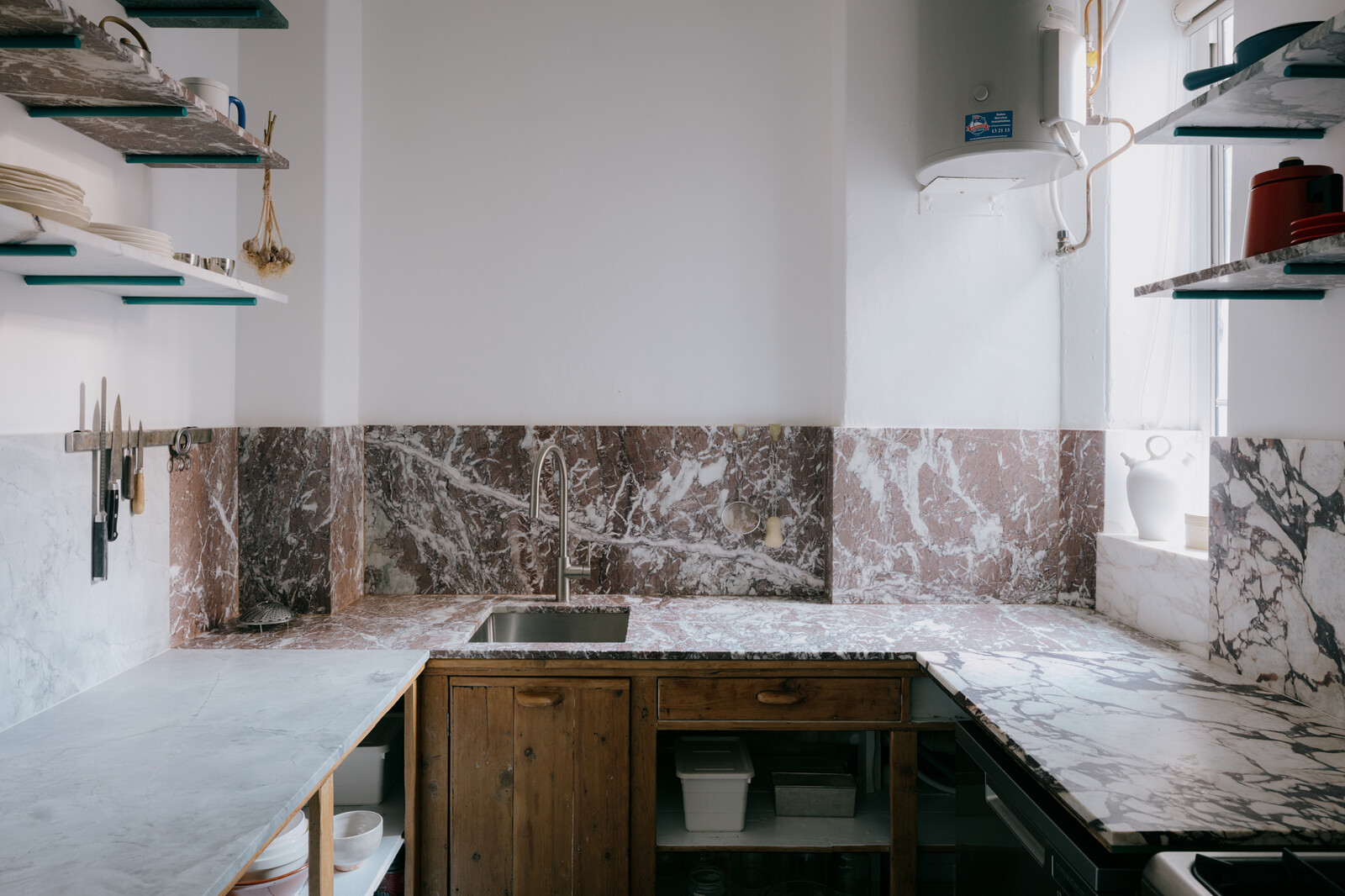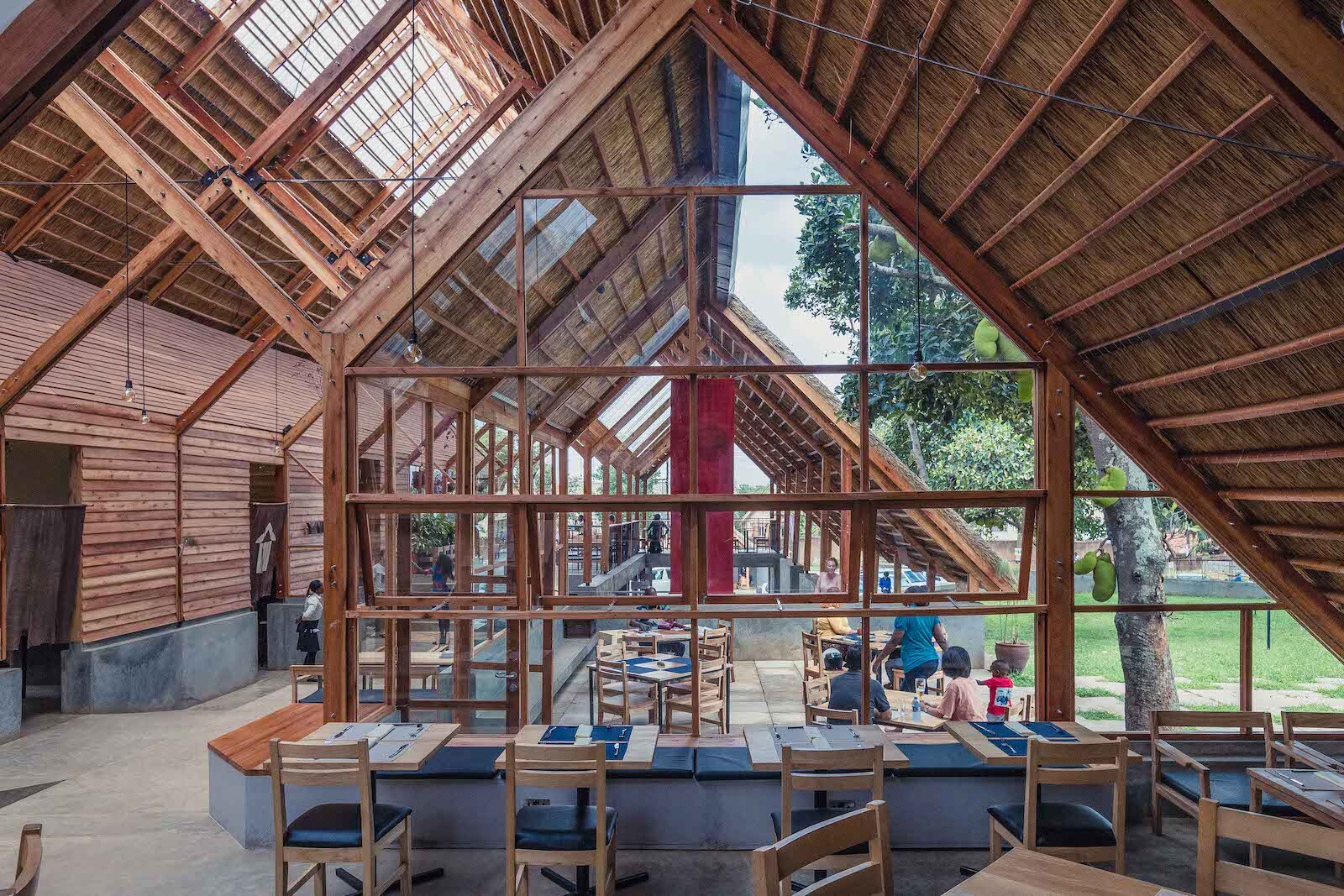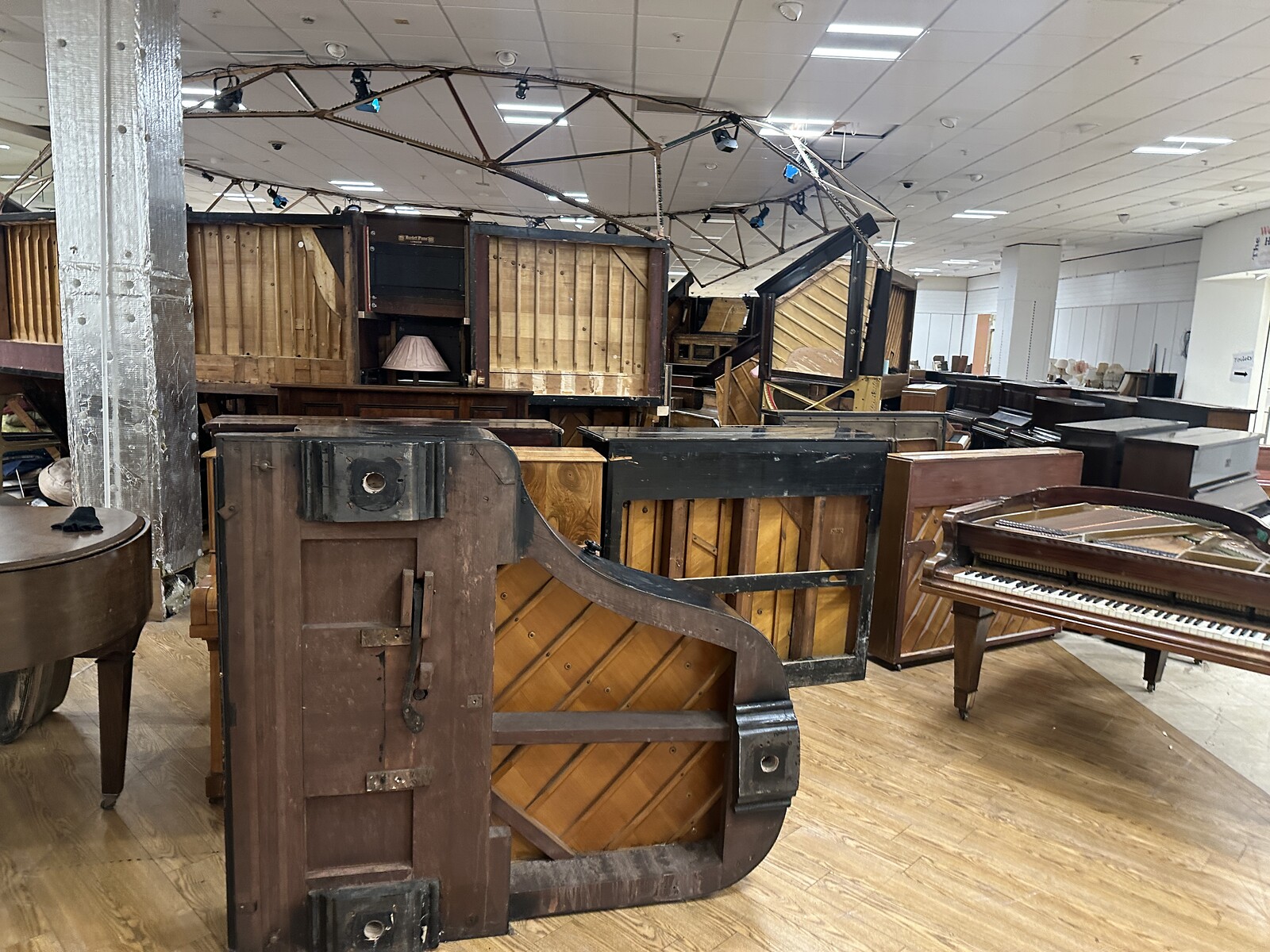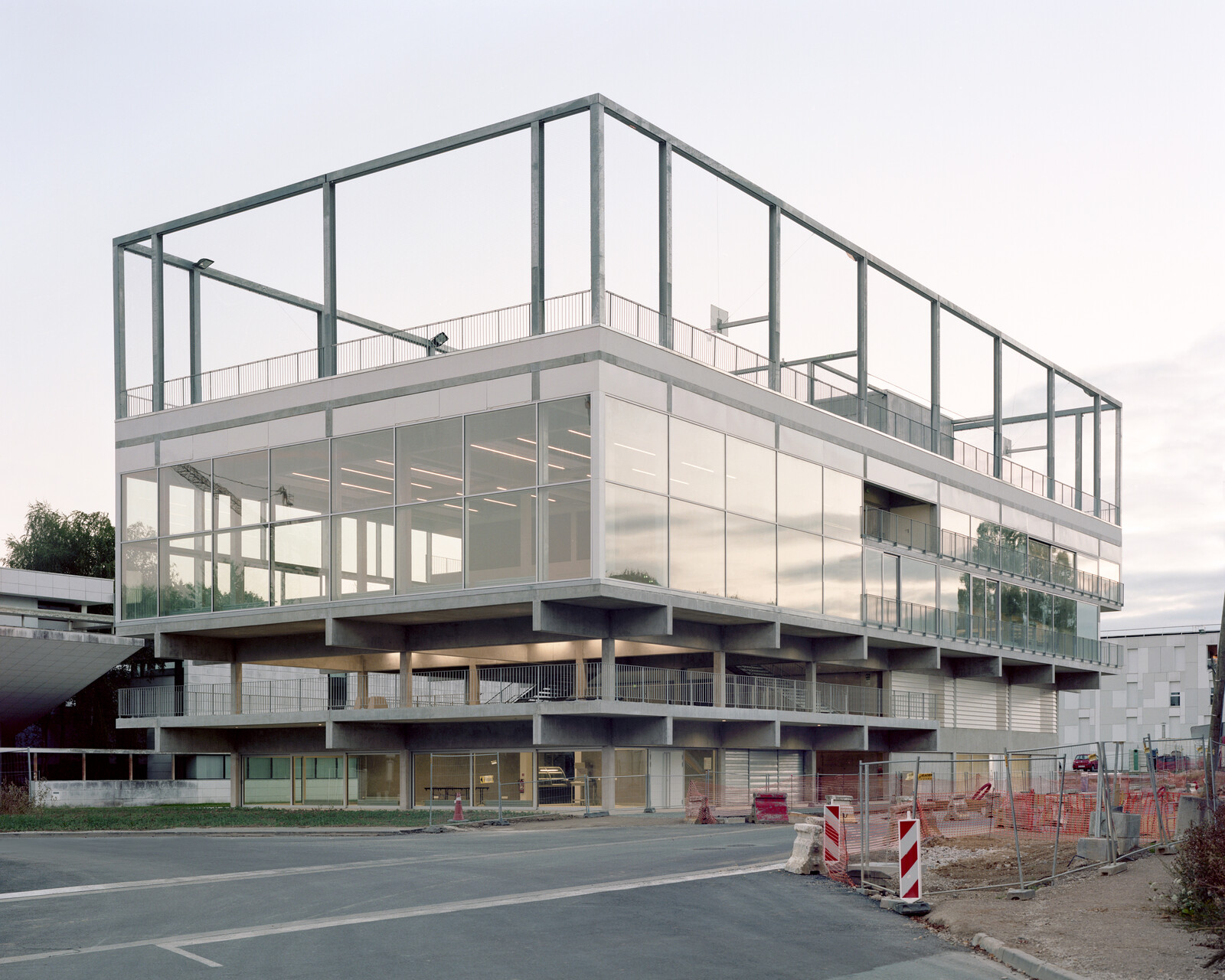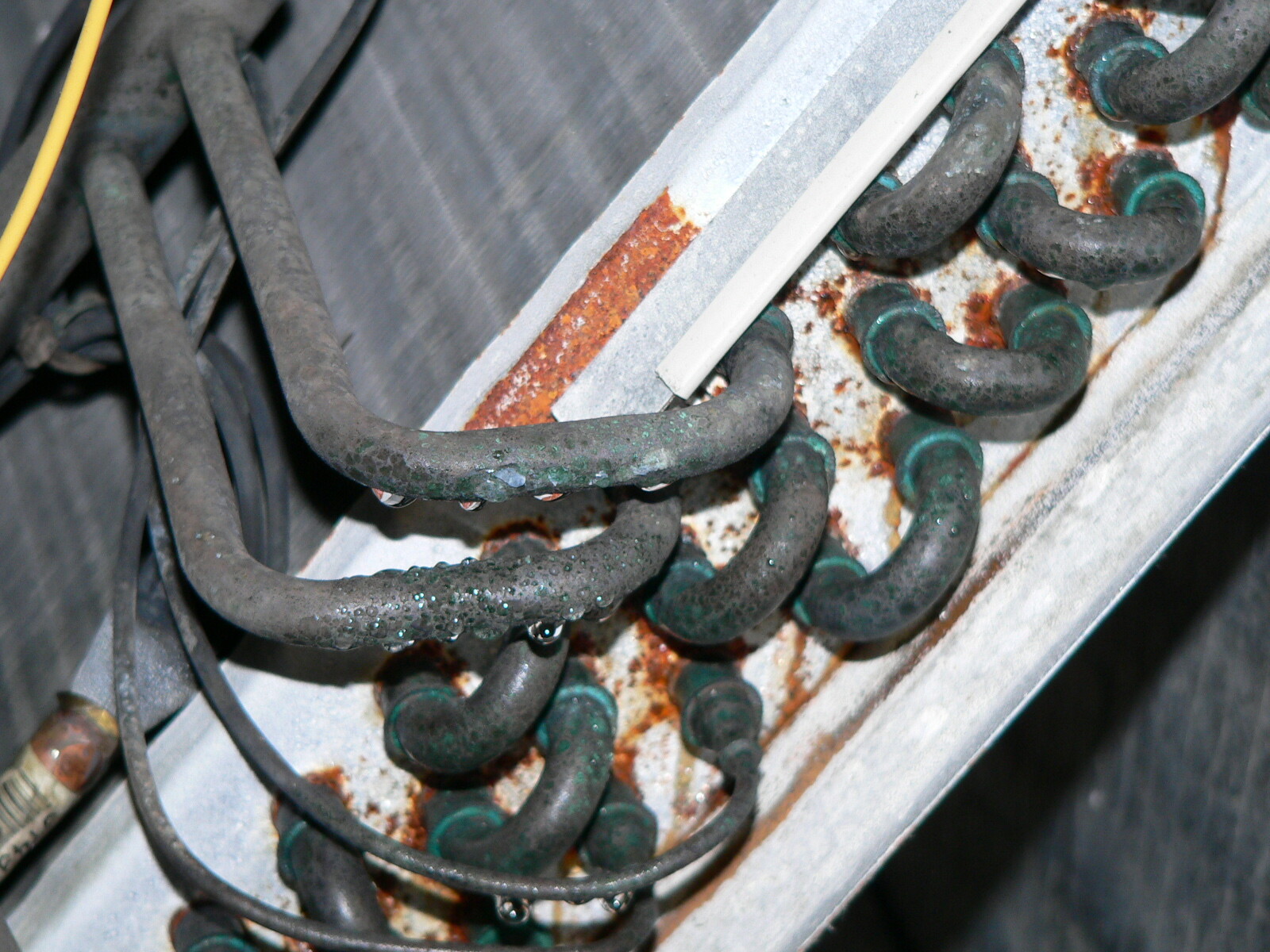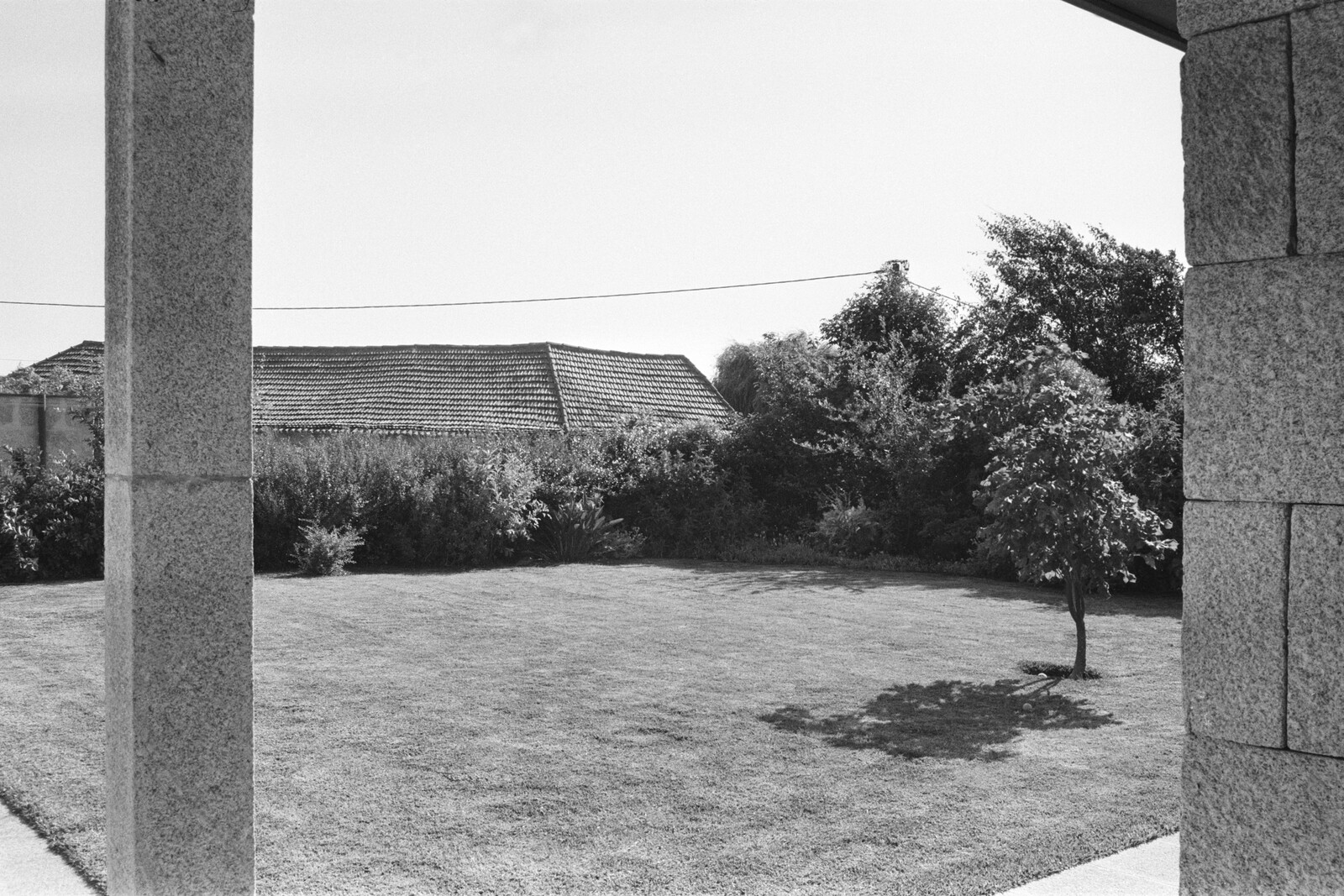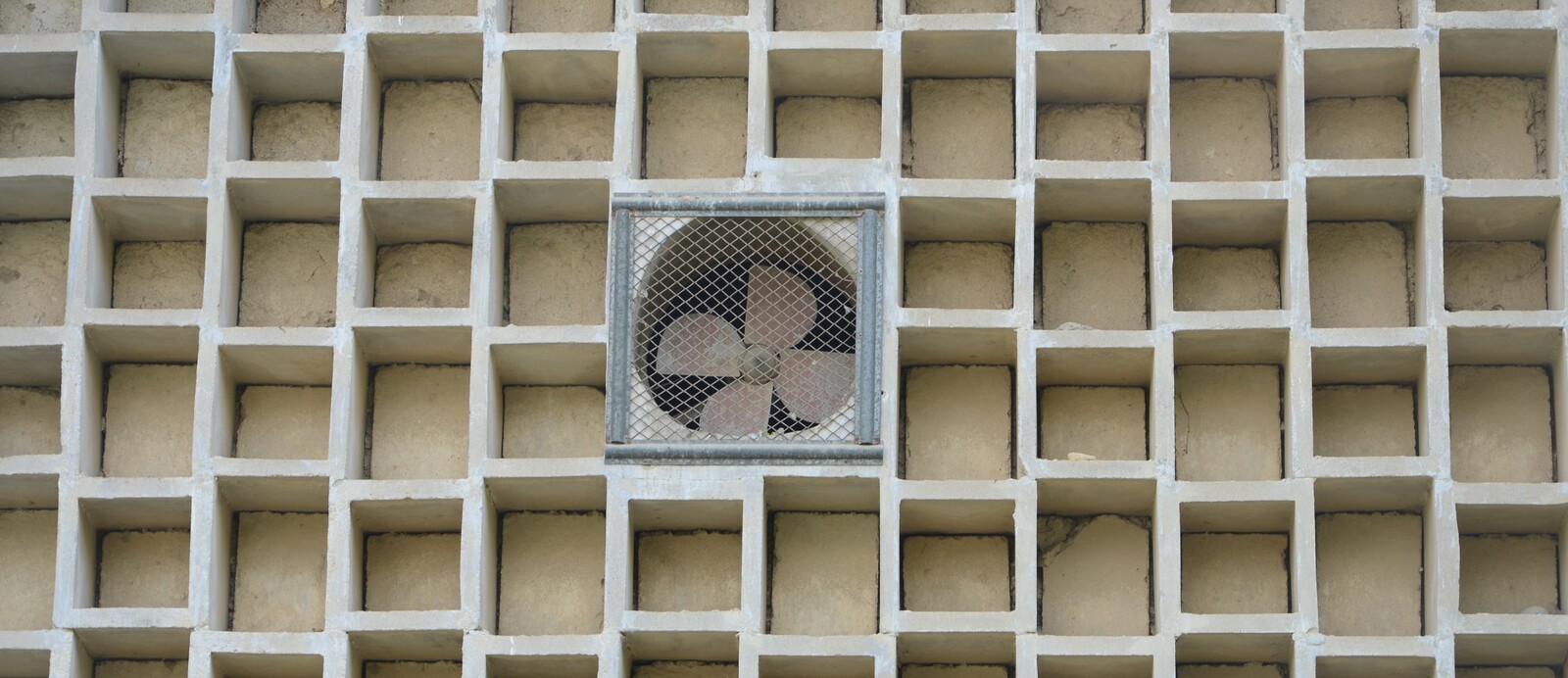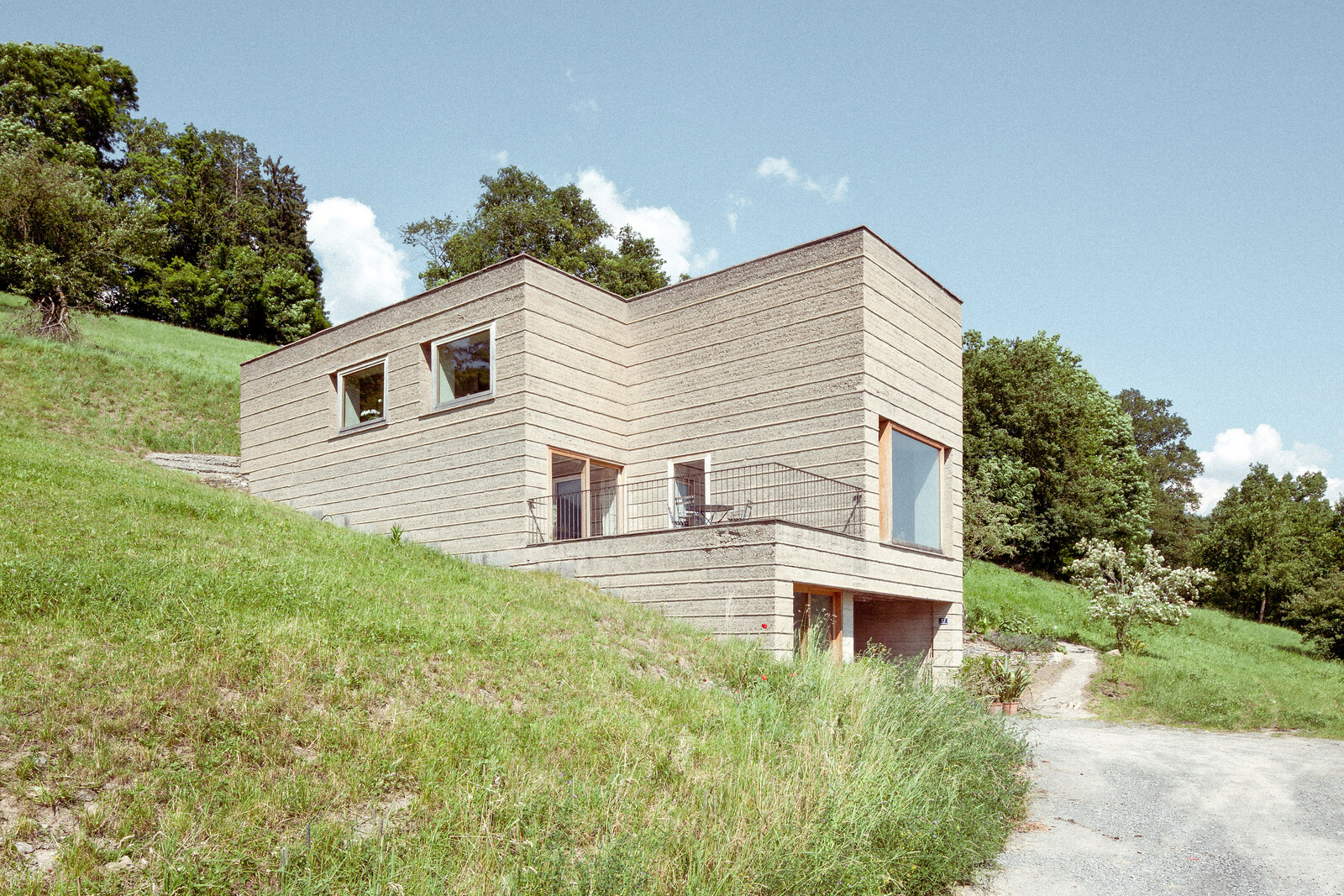Seasonal Attire
In 1996, architects Oskar and Zofia Hansen left their apartment in Warsaw and moved into their dacha in Szumin, in northeast Poland. The wooden summer house, designed in 1969, wasn’t meant to be a year-round residence. When it later became a branch of the Museum of Modern Art in Warsaw, visitors often wondered how the Hansens survived the harsh Polish winters. Visitors’ attention was mostly drawn to the numerous, yet clearly defective, electric radiators installed in every possible corner. However, the Hansens didn’t rely solely on electricity. They added a wooden vestibule, reinforced a wood stove, and sealed the windows with rubber. And, perhaps most importantly, they used home textiles.
In 2020, together with artist Alicja Bielawska and architecture duo Centrala (Małgorzata Kuciewicz and Simone De Iacobis), I returned to the house to study the use of textiles in home interiors before the advent of “automatic” heating.1 In the attic, we discovered the “house eiderdown,” an inconspicuous pile of striped quilts that did not seem to have any clear purpose until we unfolded them, which revealed them to be a roof lining. Sewn by Zofia Hansen from typical eiderdown material and stuffed with eiderdown wadding, the quilts were made to fit between the collar beams. When hung on the joists, they would lower the ceiling—an easy way to prevent heat from escaping upwards during the winter, and additionally to insulate the roof.
The house turned out to be a treasure trove for studying vernacular methods of heat insulation. The Hansen family clothed and unclothed their home according to the rhythm of the seasons. During heatwaves, they would place a tulle curtain in the doorway. During frosty weather, a thick, quilted fabric was nailed to the front door to insulate the hall. With the use of domestic fabrics, the Hansens could turn their spacious, airy, and open summer house into an inwardly focused, textile-clad, enclosed winter house.
The Hansen family was not unique in dressing up and dressing down their house for different seasons. In Poland, before the spread of coal-fired cogeneration plants, textiles were widely used as a seasonal attire for architecture.2 Kilims, tapestries, bedspreads, carpets, and rugs appeared over centuries in manor houses, aristocratic mansions, and peasant cottages. Textiles insulated homes of all social classes. They helped adapt domestic spaces to changing external conditions such as temperature, light, and humidity. It was only with the spread of central heating that home textiles were reduced to a decorative function.
Home textiles, like clothes, are a way to mediate between the human body and its immediate environment. Contrary to contemporary apartments that care for our thermal comfort almost without us noticing, the clothed interiors of the pre-electric era required much more attention. Their inhabitants had to attune themselves to nature’s cycles, be attentive to subtle changes in the environment, and maintain seasonal rituals of dressing up and dressing down the space.
The need to clothe one’s home brings with it the discomfort of less stable thermal conditions and an onerous obligation to constantly take care of one’s surroundings. However, to quote philosopher Jacques Pezeu-Massabuau, “Could we not use discomfort deliberately or to an advantage that might be pleasurable at a remove? Perhaps we could even desire discomfort … if we knew how to forge a path through it to well-being.”3 A deliberate venture outside the comfort of contemporary architecture and its artificially stabilized conditions can open us to a much richer experience of the world: a conscious participation in the cycles of nature, the passage of time, circadian rhythms, and sequences of light and darkness.
A Historical Toolkit for New Comfort
After an extensive study of photographs, paintings, and various historical spaces in Poland, we created a typology of domestic textiles that were, and sometimes still are, used in the region, corresponding with the twelve phenological seasons characteristic of the Central and Eastern European climate zone. Most of them have an insulating function. Zaplecek, for instance, provides insulation to the wall during frost in the winter and cold spells in the spring so that one may lean against it without feeling a chill. Portiera is hung around the front door to prevent cold air from entering the room when the door is open. Wałek, a draught excluder, seals gaps in doors and windows, while a parawan screens against draughts and creates a pocket of warmth for those cozying up to the fireplace. Podpinka, like the one created by Zofia Hansen from eiderdown, reduces the volume of space to be heated, and chodnik, a rug that can be used throughout the year, creates warm pathways around the house.
Other textiles are meant to be used in warm seasons that ensure air circulation during heatwaves and regulate the ingress of light. Muchołap, a “fly-catcher,” is placed in doorways to provide a protective barrier against insects. A dyskretka or zazdrostka reaches half of the window height to provide privacy. Zasłony are translucent window screens made from light fabrics, which scatter sunbeams around the room, while baldachim shade the bed area so that residents, including animals and plants, can have continued access to light while others sleep.
Although some of these architectural elements can also be found in other geographical zones, their Polish names reveal the relation of textiles to human body.4 Zaplecek comes from plecy, meaning “back.” Chodnik comes from chodzić, meaning “to walk.” Narzuta, a bed covering that can be thrown over one’s shoulder when going outside, comes from narzucać, meaning “to throw.”
While it would be difficult to imagine a complete move away from central heating and air conditioning, recalling traditional home textiles could help design new ways of reducing the environmental consequences of comfort. Moreover, these historical studies do not have to be limited to home interiors; sunshades have traditionally been used in the streets of Seville. As a simple, widely available and relatively inexpensive solution, textiles allow for greater flexibility in emergency situations. When we exhibited this research in Krakow a few months after the Russian invasion of Ukraine, the audience there treated the proposals as practical advice for the coming energy crisis. These solutions, which at least in Poland only require us to look back a few generations, create what we call a “soft-cum-hard architecture,” one that is composed of both permanent walls and seasonally changing shells and is able to adapt to a climatically unpredictable future.
The exhibition The Clothed Home: Tuning in to the Seasonal Imagination, organized by the Adam Mickiewicz Institute, represented Poland at London Design Biennale 2021 (exhibition concept: Centrala, curator: Aleksandra Kędziorek, artist: Alicja Bielawska). It was later presented at the National Museum in Krakow and the Lisbon Architecture Triennale (both 2022), and featured in Super Vernaculars – Design for a Regenerative Future, BIO27–Biennale of Design in Ljubljana (2022) and +/– 1 °C. In Search of Well-Tempered Architecture, Slovenian Pavilion at the Venice Architecture Biennale (2023). It will be presented in Vilnius in the autumn of 2023.
The first coal-fired cogeneration plant was built in 1889 in Szczecin. The biggest increase in automatic heating systems was after World War II: in 1950 the Communist Party launched a campaign for the widespread electrification in the countryside. But, in our research, we found cases of houses running only on coal or wooden stoves from the 1980s.
Jacques Pezeu-Massabuau, A Philosophy of Discomfort (London: Reaktion Books, 2012), 13–14.
The relation of textiles both to a human body and to a building has been preserved in the Polish language – for instance, Polish strój (dress), wystrój (décor) and nastrój (ambience) share the same root, similarly to German Wand (wall) and Gewand (robe, garment). See Witold Rybczynski and Sascha Roesler’s essays in The Clothed Home: Tuning in to the Seasonal Imagination (Adam Mickiewicz Institute, 2021).
After Comfort: A User’s Guide is a project by e-flux Architecture in collaboration with the University of Technology Sydney, the Technical University of Munich, the University of Liverpool, and Transsolar.

